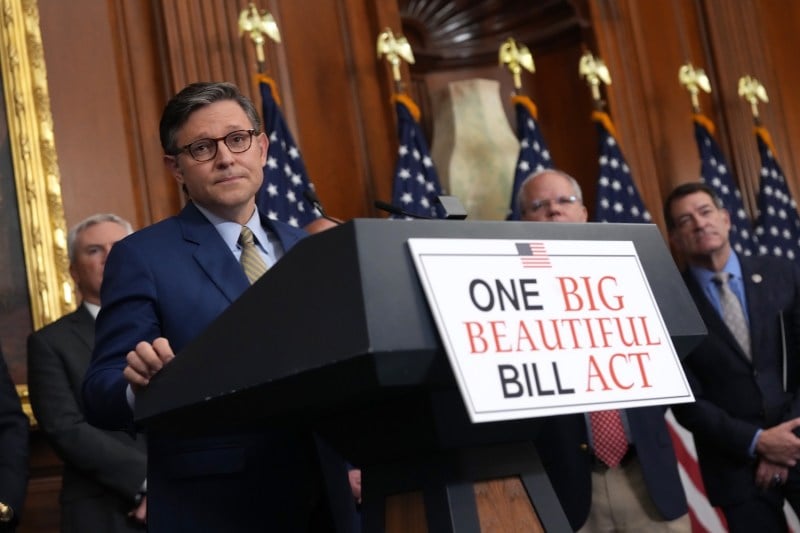How Countries Should Respond to Trump’s Tariffs

How Countries Should Respond to Trump’s Tariffs
From lying low to outright retaliation, a former U.S. trade negotiator lists out the options available to world leaders.
Foreign Policy illustration
The tariff announcement by U.S. President Donald Trump on April 2 has fueled intense discussions in capitals around the world on the best way to respond. Initial statements by foreign leaders and trade ministers have conveyed such feelings as surprise, regret, dismay, and betrayal. Not only did Trump’s tariffs go far beyond market expectations, but they also seem to have targeted U.S. partners and allies most acutely.
Countries must now formulate response plans based on their national interests while also taking into account factors such as overall relations with the United States, obligations under the World Trade Organization (WTO), shifting supply chains, areas of potential negotiating leverage, and fears of further U.S. retaliation.
The tariff announcement by U.S. President Donald Trump on April 2 has fueled intense discussions in capitals around the world on the best way to respond. Initial statements by foreign leaders and trade ministers have conveyed such feelings as surprise, regret, dismay, and betrayal. Not only did Trump’s tariffs go far beyond market expectations, but they also seem to have targeted U.S. partners and allies most acutely.
Countries must now formulate response plans based on their national interests while also taking into account factors such as overall relations with the United States, obligations under the World Trade Organization (WTO), shifting supply chains, areas of potential negotiating leverage, and fears of further U.S. retaliation.
China has moved quickly down the retaliation route. Other countries, such as Vietnam, have signaled the possibility of unilateral tariff cuts and a strong interest in negotiation. The European Union is also talking about the need to reach a fair deal while noting that it is prepared to retaliate should negotiations fail.
There is no one-size-fits-all approach for countries to respond to Trump’s tariffs. Instead, drawing on my nearly three decades as a negotiator in the Office of the U.S. Trade Representative, I can point to a menu of realistic options that countries can pursue in the short term, separately or in tandem.
Over the longer term, however, countries will need to give serious thought on how to make themselves less vulnerable to shifting policies.
Explain, Complain, and Enlighten
As is now well known, Trump seems to have relied on a simplistic formula that had more to do with trade deficits than duties for identifying the tariff rates that other countries supposedly charged the United States—and on the basis of which he is retaliating. The White House divided U.S. trade deficits (in goods, not services) by imports from a particular country. This is, of course, hardly an accurate means of arriving at a tariff.
Beyond the obvious inaccuracies, many economies will feel like they were not given ample credit for recent actions that they have taken to address Washington’s concerns. These steps include unilaterally lowering tariffs on certain goods, as India and Israel have done; significantly expanding their manufacturing investments in the United States, as Japan, Korea, and Taiwan have done; and working closely with the United States to counter unfair Chinese trade measures, as Australia and Canada have done.
Countries with prior free trade agreements with the United States feel particularly mistreated given the close economic relationship and increased two-way trade and investment that has come about as a result of those deals. Some of these aggrieved countries may first pursue a strategy of sending high-level officials to Washington to try to explain their special status and seek more favorable treatment. It’s unclear how far they may get, particularly if their words are not backed up with additional actions and announcements.
Unilateral Measures
As described, some countries have already attempted to allay Trump’s purported concerns. These and other countries may be tempted to do still more—possibly by announcing tariff cuts; removing onerous nontariff measures such as digital services restrictions and standards requirements; or making commitments to buy more energy, agriculture, weapons, or other products and services from the United States.
These offers may please Trump, but what might countries get in return?
Undoubtedly, world leaders will be skeptical about this approach, since such steps over the past several months did little to shield them from steep tariff hikes. India, for example, unilaterally cut tariffs on a number of products of interest to U.S. exporters, including motorcycles, only to be hit with a 26 percent tariff.
The attractiveness of this potential response could lessen as the economic fallout of the tariff hikes spreads in the United States, providing more leverage to Washington’s partners to appeal for alternative strategies.
Negotiation
As a self-proclaimed dealmaker, Trump has expressed interest in negotiating with partners in exchange for tariff decreases, arguing that the tariffs “give us great power to negotiate.” The White House has highlighted its argument that the April 2 executive order imposing the tariffs specifically allows for the president to lower tariffs when partners “take significant steps to remedy non-reciprocal trade arrangements and align with the United States on economic and national security matters.”
In contrast to taking unilateral measures, a negotiating approach is more formal, involving written outcomes on a range of matters, with strong enforcement provisions. Mexico and Canada are already committed to this path through the review system called for in the trilateral USMCA trade agreement, while negotiators from New Delhi and Washington are busily trying to hammer out a trade agreement in the lead-up to a visit to India that Trump has planned in the early fall.
This approach entails risks. Foreign officials may be hesitant to embark on this path with the fear that Washington will submit a long list of demands, including many that could be politically difficult for them, without giving much in return. For example, Washington is expected to seek strict rules that promote the inclusion of U.S. components in automobiles and other finished products, while minimizing or even banning Chinese inputs. And of course, foreign negotiators must be questioning the value of such bilateral agreements without a guaranteed safe haven from future tariff hikes or other unilateral measures that the Trump administration may impose.
Retaliation
Some countries may be subject to domestic pressure to retaliate against the United States, but in reality, this is a risky and impractical path for many. Notably, Trump has made it clear that he is prepared to raise tariffs further in the face of retaliation. One only needs to look back to the escalating U.S.-China trade war in his first term to know that this is no bluff.
Additionally, larger countries are better equipped to weather such a storm, with medium-and smaller-sized countries traditionally being more hesitant to strike back, particularly without cover from the WTO.
China has been the most brazen with its retaliatory package so far. After initially taking a more modest response to the 20 percent tariff hikes imposed during the first two months of Trump’s new administration, Beijing took its gloves off last week by announcing the imposition of tariffs at the same rate of 34 percent that it received from Washington—but unlike the United States, it provided no product or sectoral exclusions.
Moreover, Beijing has supplemented its tariff hikes with other measures, including further restrictions on critical mineral exports to the United States, the blacklisting of certain U.S. companies, and launching an anti-dumping investigation against a U.S. company.
China is not be alone in pursuing this approach. Canada retaliated last month to earlier Trump tariff actions, and the European Union is finalizing its retaliation package, which—like China’s—is expected to go beyond just tariffs to include other areas, such as services and government procurement.
But while Canada, China, and the EU are responding with their own retaliatory measures, they have responded proportionally so far, avoiding an escalatory spiral. The option to escalate remains on the table, particularly if Trump himself follows through with threats of escalation against parties that retaliate.
Lying Low
Another strategy to be considered, particularly by medium- and small-sized countries that were assigned the baseline tariff rate of 10 percent, may be to just lie low, thereby encouraging Washington’s spotlight to remain on others.
This option may be the most viable for many countries. First, the U.S. commerce secretary and the U.S. trade representative are likely to be preoccupied with bigger economies, including major trading countries that are subject to unusually high rates. Second, this would allow these countries to quietly gain insights into what is and isn’t working for others in their engagement with Washington, helping them to be better prepared when it’s their turn. Finally, it will become clearer with time whether the White House is even contemplating reducing tariffs below the 10 percent bar, in light of its stated revenue-generating objective for the tariff increases.
Diversification
Many countries are accelerating efforts to lessen their dependence on the U.S. market, largely through deepening commercial and economic ties with others. As a result, we are already witnessing a series of economic cooperation announcements, such as plans between China, Japan, and South Korea, as well as an uptick in free trade negotiating activity around the world. Notably, the EU and India have given new priority to their previously stalled talks, China and Korea are working to upgrade their free trade agreement, and Canada and Indonesia are working to put their trade pact into force by next year.
We are also likely to see more countries seek accession to existing trade agreements, including the Comprehensive and Progressive Agreement for Trans-Pacific Partnership (CPTPP) and the Regional Comprehensive Economic Partnership, as well as multiparty sectoral agreements, including in the digital space. It’s even conceivable that the EU may now look twice at the CPTPP, an option that seemed of little interest just months ago.
As officials in capitals all around the world consider their options for responding to the April 2 U.S. tariff announcement, they will carefully weigh potential benefits and risks. One immediate decision to be made is whether to push for inclusion in the early queue for discussions with Washington, or hang back to see how their partners fare with their U.S counterparts, giving them time to assess the impact on the global economy and at home.
Finally, these officials will also need to be vigilant regarding the potential for more U.S. tariffs, particularly on the sectoral front, where two Section 232 national security investigations are underway on lumber and copper, with more—including on pharmaceuticals and semiconductors—expected be launched soon.
As the tariff saga unfolds, agility and flexibility on the part of countries will be key, as the days of certainty, trust, and respect seem to be in the rearview mirror.
This post is part of FP’s ongoing coverage of the Trump administration. Follow along here.
Wendy Cutler is the vice president at the Asia Society Policy Institute. She previously spent nearly three decades as a diplomat and negotiator in the Office of the U.S. Trade Representative. X: @wendyscutler
More from Foreign Policy
-

American flags are draped around tables and pipes in a small factory room as women work at sewing machines to produce them. Tariffs Can Actually Work—if Only Trump Understood How
Smart trade policy could help restore jobs, but the president’s carpet-bomb approach portends disaster.
-

Donald Trump looks up as he sits beside China’s President Xi Jinping during a tour of the Forbidden City in Beijing on Nov. 8, 2017. Asia Is Getting Dangerously Unbalanced
The Trump administration continues to create headlines, but the real story may be elsewhere.
-

Trump announces tariffs Trump’s Wanton Tariffs Will Shatter the World Economy
Economic warfare is also a test for U.S. democracy.
-

The Department of Education building in Washington, DC on March 24. Why Republicans Hate the Education Department
Broad popular support means that even Ronald Reagan failed at dismantling the agency.









Join the Conversation
Commenting on this and other recent articles is just one benefit of a Foreign Policy subscription.
Already a subscriber?
.
Subscribe
Subscribe
View Comments
Join the Conversation
Join the conversation on this and other recent Foreign Policy articles when you subscribe now.
Subscribe
Subscribe
Not your account?
View Comments
Join the Conversation
Please follow our comment guidelines, stay on topic, and be civil, courteous, and respectful of others’ beliefs.
Change your username |
Log out
Change your username:
CANCEL
Confirm your username to get started.
The default username below has been generated using the first name and last initial on your FP subscriber account. Usernames may be updated at any time and must not contain inappropriate or offensive language.